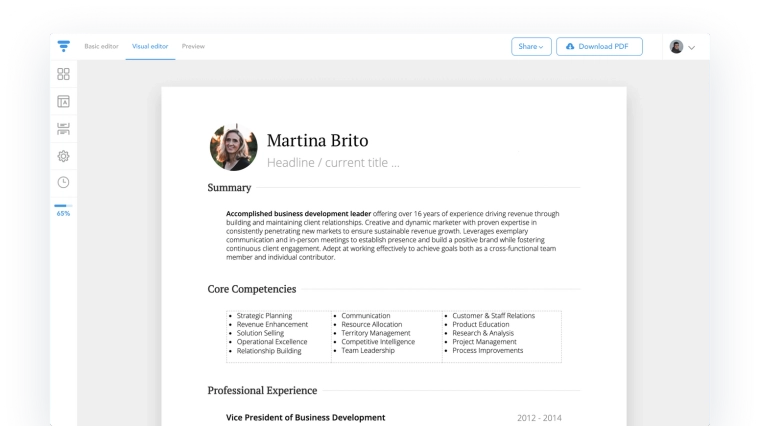![How to convert a resume to a CV [with examples]](/static/bbef40c0f98fc78ed23945501e986214/cc010/laptop-with-resume.jpg)
![How to convert a resume to a CV [with examples]](/static/bbef40c0f98fc78ed23945501e986214/cc010/laptop-with-resume.jpg)
During your job search, you may encounter a job posting that asks for a CV instead of a resume. While this can mean a couple different things depending on the position, it is important to know how to convert a resume to a CV so that you are ready for any application.
Recommended links:

Though resumes and CVs are used for a similar purpose—to apply for jobs—they are different in several important ways.
A resume is a short document, usually one or two pages, that markets you as a good candidate for a job and is customized for every new application. It focuses on the most relevant work experience and achievements in your career history. In the US and Canada, it is used for nearly all job applications.
A CV is a longer document that gives a detailed account of your education and work history. It can be as many pages as it needs to be, and it will contain all of your work history, education, research experience, publications, presentations, conferences, awards, certifications, and sometimes more. In the US and Canada, CVs are used primarily in academia, and are not common in other fields.
In short, a resume is a brief marketing document where you give only your most relevant and impressive details, whereas a CV is a long, inclusive rendering of your entire career and education.
Generally, you should use a CV only if it is specifically requested. In America, CVs are primarily used for academic positions. This may be teaching, tutoring, research, and others. Though some medical institutions or senior research positions in private companies may ask for a CV, for the most part, a resume is used outside of academia. If you are unsure, feel free to reach out to the employer to ask.
Keep in mind, however, that these are the American definitions. In some countries, such as the United Kingdom the term “CV” refers to what Americans would call a resume, and in others, such as Australia, the terms “CV” and “Resume” are used interchangeably. Before you submit a CV, make sure you know what specifically is being asked for.
Further, the CV requirements in each country may not be the same. Some countries may expect your CV to include your picture, your age, your address, and more. When you are writing a resume or CV for a different country, make sure it includes all the right details.
When it comes time to write a CV, you don’t have to throw out your resume and start from scratch. There are some steps you can take to convert your resume into a great CV.
It is best to use a traditional format for a CV. Institutions requiring a formal CV are likely conventional, and will be expecting a classic CV template. Be sure that your CV is professional and supports as many pages as you need. Stay away from anything too colourful or complicated.
Your CV may need more personal information than a resume, especially if you are sending your CV to a different country. Whereas your resume likely only has your name, contact information, and city, a CV may require things like your address, your age, or your academic advisor’s name. Make sure the applications requirements are clear when you write your personal information on your CV.
Make sure that your CV includes all of the responsibilities and key accomplishments in your previous roles. Whereas a resume is focused on only your best and most impressive achievements, a CV has the space to be more comprehensive.
As CVs are usually used for academic positions, the education section is very important. Your CV should include information like specialty, research area, awards, GPA, and whatever else is relevant to the position. It is important to give an in-depth look at your education.
A CV should be comprehensive. As space is not a constraint as it is with a resume, your CV can have as many sections and pages as you need to showcase your experience. The standard Work Experience, Education, and Skills sections of a resume likely won’t be enough for your academic CV.
New CV sections may include:
Where a resume prioritizes active language and quantifiable achievements, a CV will prioritize academic accomplishment, teaching, and research experience. Review your CV, and make sure that it is appropriately academic and professional. Describe your experience with direct and professional language, and don’t try to sell yourself too hard—with a well designed CV, your qualifications will speak for themselves.
To turn your resume into a CV follow these steps:
Table Of Contents